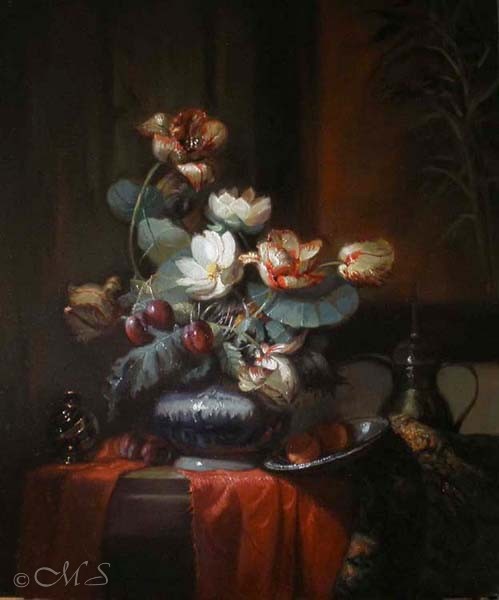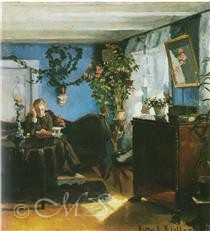One of the most inspiring facets of doing research for my Lessons Projects over the years, is the discovery of the unknown. For my first pigment exploration, I learned about colors available to and used by the 17th Century Dutch Masters. Then came the Golden Age of Greek Art in the 5th Century BCE. After that the Native Americans of the Southwest became a topic of infinite fascination. Later after a trip to Egypt, I couldn’t wait to search for knowledge about the pyramids and tombs and how they were adorned with magical colors and jewels. Even the study of natural pigments of Oregon was an eye-opening revelation.
Hopeless Pigment Nerd

Being the pigment nerd that I am, I have now found another avenue for the unexpected. Initially, I set out to investigate the palettes of women artists of the past and not only have I learned about colors in their compositions but also the barriers they faced while pursuing their own artistic desires. Some were bound by financial inadequacies. Others were barred from art classes because women were forbidden to attend. In the classes they were allowed into, models were cows rather than humans. The surprising unforeseen is how many became socially motivated because of those very impediments.
Fighting for a Place in the World of Art

Christine Kitty Kielland is a prime example. In Norway, Kitty was one of the most prominent artists of her time who encouraged the style of Realism and inspired women artists to fight for their place in the art world. Born in 1843 in Stavanger to an affluent and prominent family, she wanted to be an artist early- on but had to delay her dream until age 30 because of social obstacles. It is thought that she became independently financially secure during this time which allowed her to move forward with her artistic pursuits.
Banned from Teaching Studios
She then traveled to Karlsruhe in 1863 to study with Hans Gude. There she was restricted to private classes because women were forbidden to enter teaching studios. Kielland advanced quickly under Gude’s tutelage and found a passion for landscapes of the area using a moody somber palette interspersed with accents of occasional bright colors. Interiors also were her forte employing both harmonious subtle colors with an emphasis of bold colorful inflections.

Both Munich and Paris became home to her in later years as she continued to work, paint, and exhibit. Kielland’s paintings can be seen in many museums around the world. However, like many of the artists in this series, her name remains obscure and seldom seen in history books. I could find no evidence that she ever married but she maintained lasting friendships with Eilif Peterssen and Harriet Backer both accomplished artists from Norway.
Robust Opinions and Fierce Wit
In addition to her painting Kielland wrote short stories, articles, letters which were published widely. Because she had robust opinions and a fierce wit, she became and activist for women’s rights. Helping to found Norwegian Association for Women’s Rights in 1884 became one of her most renown accomplishments. Kitty Kielland died in 1914, after several years of ill health.

Dancing Backwards in High Heels, a pigment project to be revealed May 3 at Bronze Coast Gallery, Cannon Beach, Oregon.

Leave a Reply